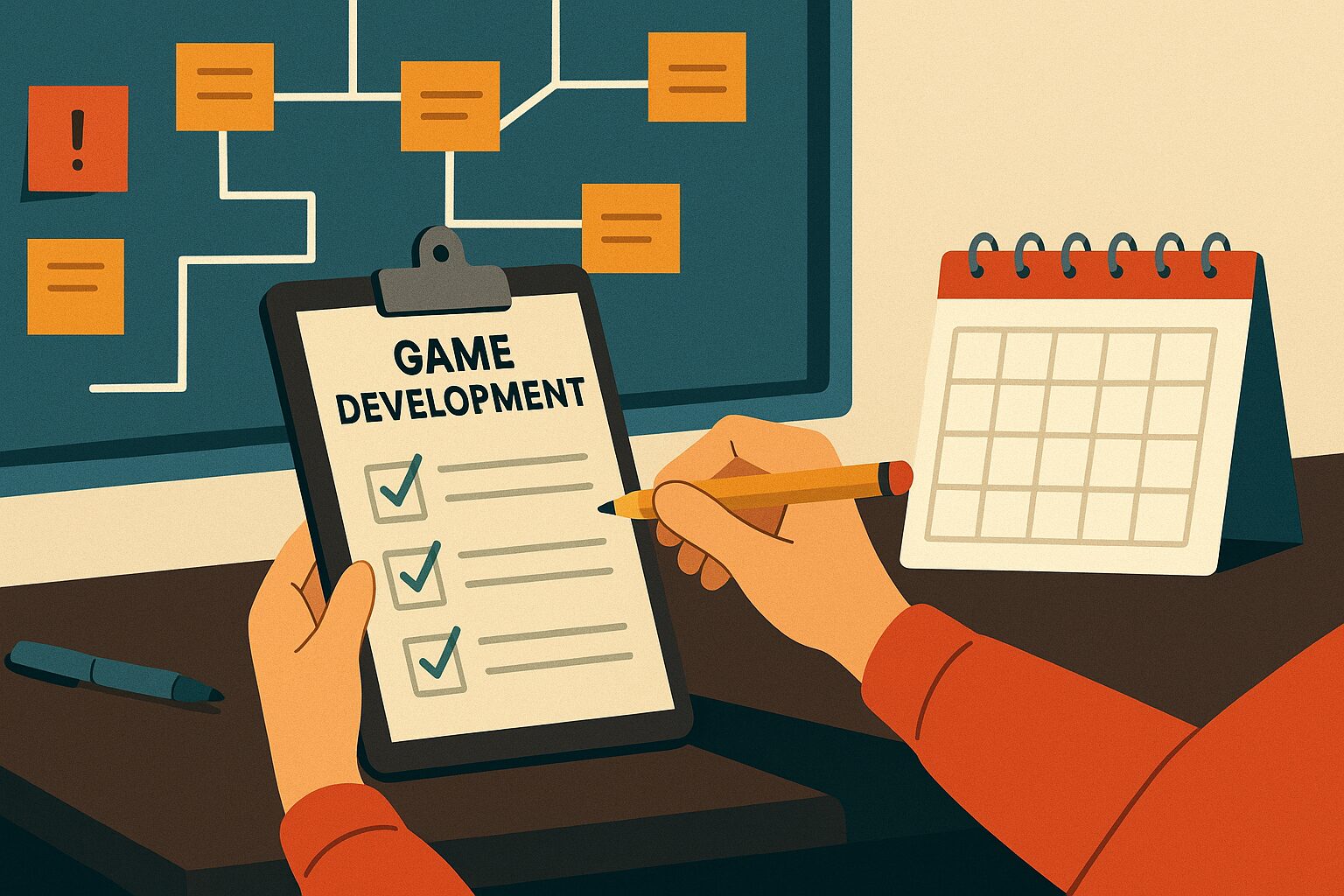
Because ambition without limits kills more games than bugs ever will
You’re excited. You’ve got an idea. You can already picture the worlds, the gameplay, the menus, the soundtrack… and now you’re stuck, frustrated, or burned out.
What went wrong?
You didn’t scope it. Or if you did, you ignored your own limits.
Scoping is the process of defining what’s actually going into the game—and more importantly, what’s not. It’s the difference between finishing a game and sitting on a half-built mess.
Here’s how to properly scope a project you can actually finish.
1. Cut the Dream Game in Half
You probably started with a “dream game”—an open-world RPG, multiplayer arena, or massive story-driven epic. That’s fine. But now it’s time to shrink it.
If this is your first or second game, your goal is not to impress—your goal is to finish.
Here’s how to trim it:
- Replace 3D with 2D
- Cut all story
- Keep only one mechanic (jumping, dodging, shooting, etc.)
- Limit the entire game to 5 minutes of playtime
You can always expand later. But finishing a small, complete loop is how you learn.
2. Define the MVP (Minimum Viable Product)
An MVP is the smallest version of your game that is still playable and “feels like the game.”
Ask:
- What’s the core mechanic? (e.g., jump over obstacles, match tiles, dodge bullets)
- What’s the player goal? (e.g., reach the end, survive a timer, collect all items)
- What’s the fail state? (e.g., fall into a pit, health hits zero, run out of time)
Everything else is optional. If it doesn’t support the loop, it’s on the chopping block.
3. Use a 1-1-1 Scope Rule (for Beginners)
If you’re new, try this:
- 1 mechanic
- 1 level (or map, or room)
- 1 enemy type or obstacle
This scope can usually be done in a few days or weeks, even solo. Once that’s done and working, you’ll understand what it takes to expand safely.
4. Break Everything Into Tasks
You can’t manage a game by thinking in vague ideas like “build inventory system” or “make boss fight.” Break everything into small, doable tasks.
Example:
Bad task: “Add level”
Better tasks:
- Design layout on paper
- Build terrain tiles in engine
- Add player spawn point
- Place 3 coins
- Set level exit trigger
Tasks should take no more than a couple hours each. If something feels overwhelming, break it smaller.
Use tools like:
- Trello – simple drag-and-drop task boards
- Notion – all-in-one note and task management
- Google Sheets – low-tech but effective
5. Use Time Boxes, Not Feature Lists
A feature list grows. A time box forces you to stop.
Instead of saying:
“I’ll add wall jumps, crouching, dashing, and double-jumps.”
Say:
“I’ll spend 2 days on movement. Whatever I have by then is what’s going in the game.”
Time boxes keep you from spiraling into feature creep hell. You’ll get more done by limiting yourself.
6. Set a Deadline—and Mean It
Give yourself a firm, realistic deadline. Not “someday.” Not “when it’s ready.” A date.
- 1 week? Finish a prototype.
- 2 weeks? Make a game jam-sized experience.
- 1 month? Finish a polished mini-game.
Then ship it. Done is better than perfect. You’ll learn more releasing 3 small games than failing to finish 1 giant one.
7. Build Ugly First, Polish Later
Don’t waste time animating menus or tweaking lighting before the game even works. Make it ugly. Grey boxes. Placeholder art. No sound.
Get the game loop working first. Polish is the reward for finishing the real game.
Final Thoughts
Scoping is about self-control. It’s about knowing your limits, managing your time, and cutting ruthlessly. It’s not sexy. It doesn’t feel creative. But it’s what separates devs who finish from devs who flake.
Every game you finish teaches you something. Every game you abandon teaches you what not to do again.
So scope tight. Build fast. Finish something.
Then do it again—but better.






